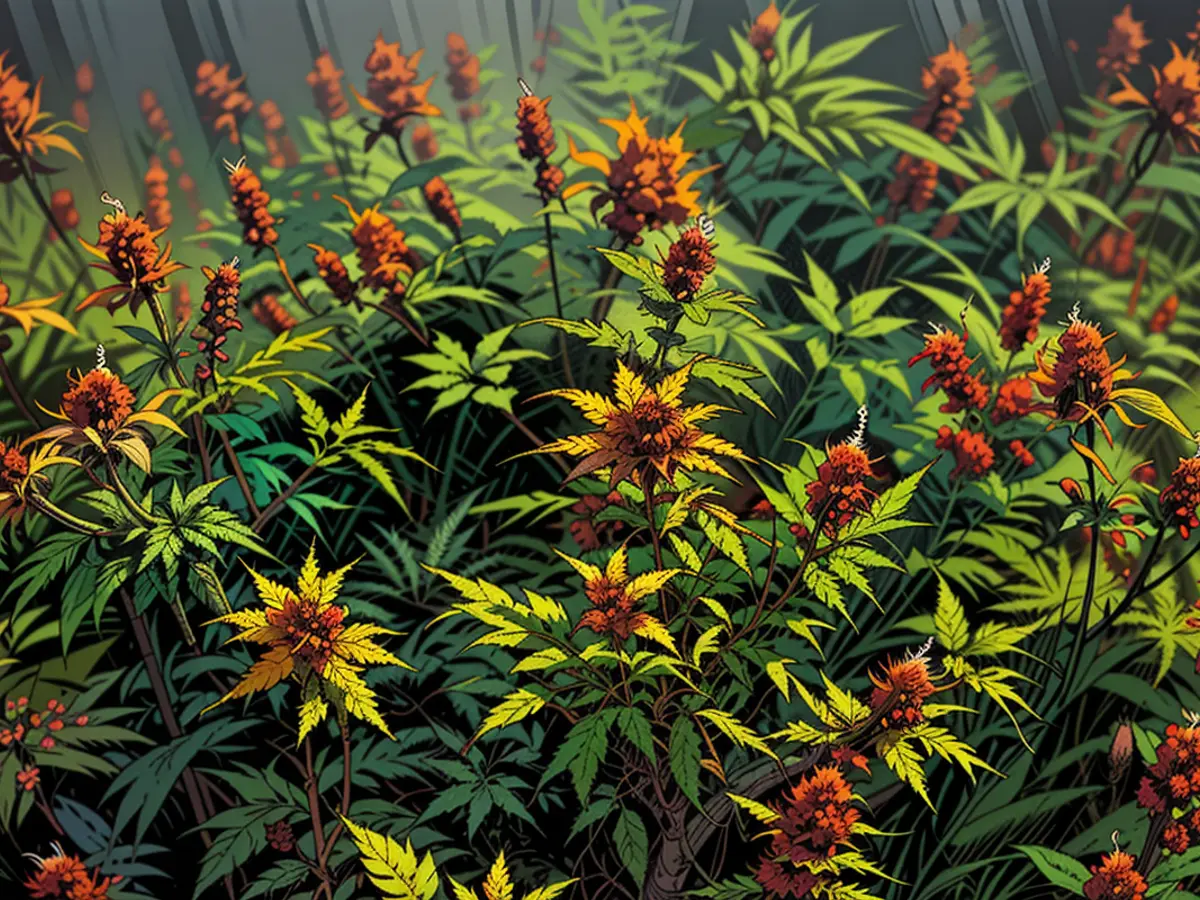Allergy symptoms persisting past the usual season, according to a medical professional's observation.
For many with allergies, fall has become an even more challenging season due to climate change. Allergies are now starting earlier and lingering longer, a trend attributed to various factors, such as the climate crisis.
As temperatures remain warmer for longer periods and the first frost is delayed, plants that spread allergens have additional time to grow. Furthermore, higher levels of carbon dioxide in the atmosphere, primarily caused by fossil fuel usage and emissions, boost plant growth, resulting in more pollen. Over 25% of American adults had seasonal allergies in 2021, according to the CDC.
Understanding common triggers for fall allergies and their symptoms can be helpful. Differentiating between allergies and respiratory viruses during the colder months can be challenging, as symptoms may overlap. Dr. Leana Wen, a wellness expert and former health commissioner, offered insights on this topic.
CNN: What are common triggers for fall allergies?
Dr. Leana Wen: The most prevalent culprit is ragweed, a plant commonly found in the United States. A single ragweed plant can release up to 1 billion grains of pollen. Ragweed season usually begins in August, peaks in September, and can extend into November.
Other plants that can trigger fall allergies include burning bush, cocklebur, pigweed, sagebrush, and tumbleweed. Molds also contribute to fall allergies. In the fall, mold can accumulate in fallen leaves, bales of hay, and damp indoor spaces.
CNN: What symptoms should people expect?
Wen: Common symptoms include a runny or stuffy nose, sneezing, coughing, watery eyes, scratchy throat, and itching and burning in the nose, mouth, and eyes.
CNN: With respiratory viruses also present during colder months, how can people distinguish between seasonal allergies and a virus?
Wen: It's challenging to draw a clear distinction. Allergies usually follow a seasonal pattern and worsen at specific times of the year. Symptoms persist for at least a week, often for longer durations. Allergies may also exhibit similar symptoms year after year. Some indicators that point more towards allergies rather than a cold include itchiness in the nose and throat and red, watery eyes.
Respiratory infections often follow seasonal patterns and are more prevalent in the winter compared to the spring and fall, typical allergy seasons. One distinguishing factor is the presence of a fever. Allergies do not result in fevers. They typically do not cause bodily symptoms like body aches and fatigue. While people with allergies might develop a cough, the presence of a cough should signal a respiratory infection.
People who have had allergies before may already know what alleviates their symptoms. Relief from allergy medications is an encouraging sign that the symptoms are due to allergies. People can also take tests for various viral infections. Tests are available for flu, Covid-19, and RSV (respiratory syncytial virus). Some hospitalized patients can also undergo a viral panel that includes diverse respiratory viruses. The US government has recently made another round of free home Covid-19 tests available - it's a good idea to sign up while the opportunity lasts.
CNN: How can specific allergy triggers be diagnosed?

Wen: Some individuals wish to identify the exact allergen causing their symptoms. They should consult their primary care physician for a referral to an allergy and immunology specialist. This specialist can perform a skin prick test, where they apply a small drop of various allergen triggers onto the skin to check for a reaction. They might also suggest a blood test searching for antibodies against the allergen.
CNN: What should we be aware of regarding allergy triggers that can cause issues year-round?
Wen: While spring and fall represent peak allergy seasons due to the widespread release of pollens, other triggers exist as well. One example is dust mites, minuscule organisms that feed on household dust and moisture. They are a common indoor allergen and can cause symptoms year-round.
I suffer from allergies to dust mites and a severe allergy to ragweed. Therefore, while I experience some allergy symptoms year-round, they worsen significantly during the fall.
Another category worth acknowledging is food allergies. Approximately 6% of adults and children have food allergies, according to the CDC. These allergies vary from seasonal allergies and can result in severe, even life-threatening reactions.
CNN: What treatments can help alleviate symptoms?
Wen: Various treatments can help manage seasonal allergies. Attempting to reduce exposure to the allergen is essential. If the issue is ragweed, limit outdoor activities during high-pollen count periods, usually mornings to early afternoons.
Change clothes upon returning indoors from outdoor activities. Keep windows and doors closed during indoor activities and in the car while driving. Dry laundry inside rather than hanging it on an outdoor clothesline.
Medications can include antihistamine pills and nasal sprays to help with stuffiness. Many over-the-counter options are available, as well as some prescription-only options. Individuals with severe symptoms may benefit from immunotherapy, also known as allergy shots.
It's usually a good idea to consult your doctor or healthcare professional before beginning any new medication regimen. While some individuals may experience positive results from non-prescription remedies, others might require prescription medication or a blend of treatments.
It's important to note that simply because a medication is non-prescription, it doesn't imply fewer side effects. Diphenhydramine, for instance, is an antihistamine that has sedative properties and can be hazardous when overconsumed. Moreover, many nasal decongestants interfere with other medications and should not be utilized for extended periods.
Maintaining good health during the fall season, especially for individuals with allergies, requires a focus on wellness. This may involve taking necessary medications, such as antihistamines or nasal sprays, to alleviate symptoms. Proactively managing allergies can also include reducing exposure to allergens by limiting outdoor activities during high-pollen count periods and keeping windows and doors closed to minimize allergen entry.









